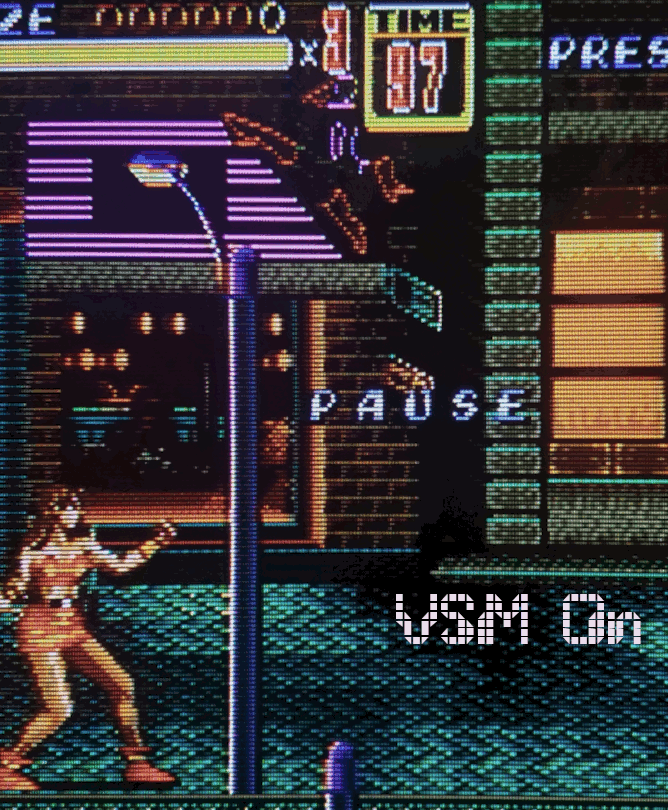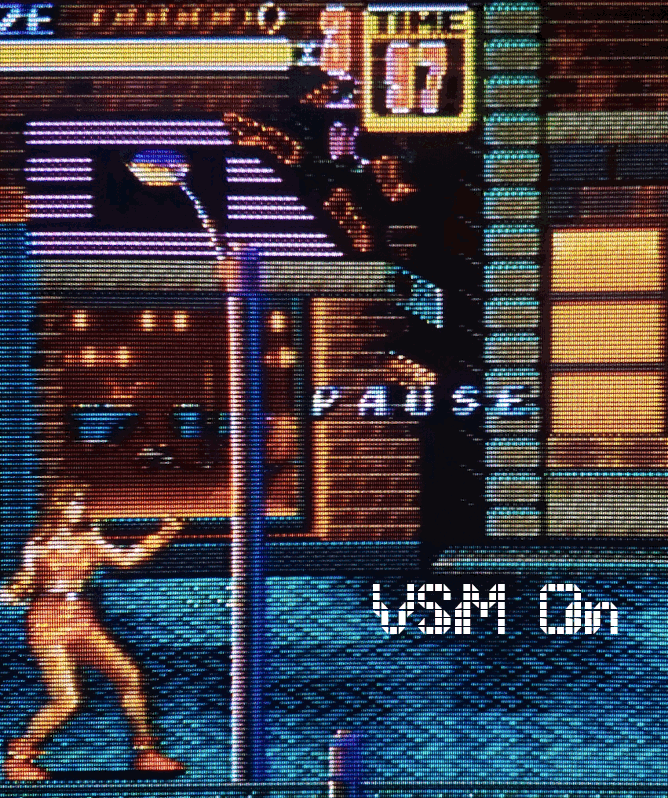Table of Contents
What is the purpose of velocity scan modulation (VSM)?
Because it takes time for a cathode to transition between low and high output (and vice versa), altering the horizontal scan rate around these transitions is intended to compensate for this and deliver more stark luminosity changes, for increased apparent edge sharpness.

This entailed adding an additional coil to the neck of the CRT, and it was marketed as a step-up feature for select sets.
Component Comparison
Pictured below is a 2-frame animated GIF of a Toshiba 24AF44. There are no menu settings to alter the degree of scan velocity modulation on this set, so the VSM coil was internally unplugged for comparison. Notice below how all the black areas become extremely wide in Super Mario World with VSM enabled. Every instance of black pixels is now one or even several more additional black pixels wider than it should be. This affects so many elements of the image. To take one small example, because Mario's eyes and sideburns are both black, they have both grown and size and are now practically touching. There's even a large black pixel out of nowhere on the top left side of the 'R' in MARIO.

Conversely, the colored/non-black areas of the image are shrunk down and become smaller with VSM enabled. When it is off, brighter areas are shown at their intended width.

Composite Comparison
Pictured below is a 2-frame animated GIF of a Toshiba 24AF44. There are no menu settings to alter the degree of scan velocity modulation on this set, so the VSM coil was internally unplugged for comparison. Having it enabled makes brighter areas smaller along the horizontal axis; when it is off, brighter areas are shown at their usual width. Having VSM enabled also makes dot artifacts more distinct.

On a set such as this, the comb filter first introduces noticeable dot artifacting for composite (as most comb filters do for 240p content), and then VSM highlights the dots even further. Since this set has a component YPbPr input, a RetroTINK could readily be used for composite decoding instead to bypass all this extra dot artifacting.

 This work is licensed under a
This work is licensed under a